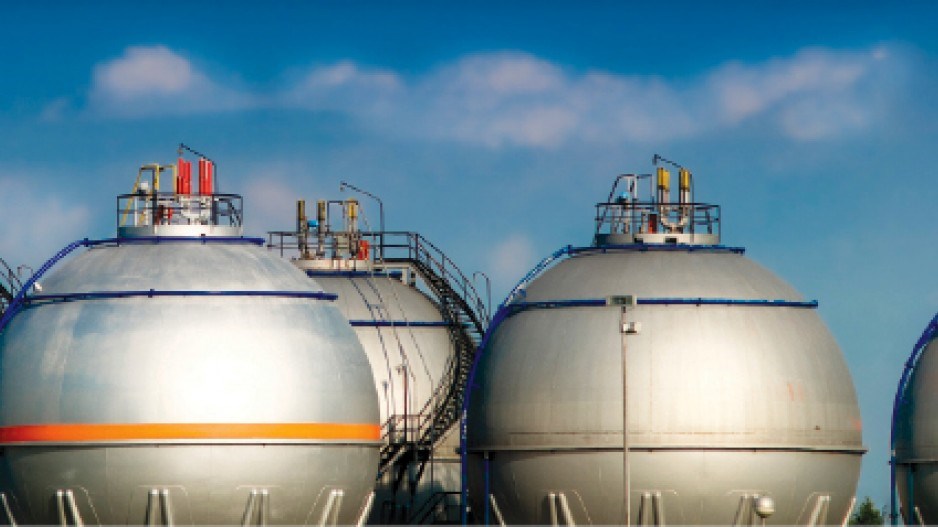Declaring natural gas to be clean energy could help oil and gas companies in Canada get a jump on competitors vying for liquefied natural gas customers in Asia.
Having cheap thermal power sources that can be built quickly to liquefy natural gas is one less hurdle to clear in the race to secure contracts in Asia.
But the biggest hurdles for the Canadian gas industry are regulatory processes, politicians and energy industry leaders were told recently at an energy conference sponsored by the BC Business Council. Clearing those hurdles will require negotiating agreements with First Nations along pipeline corridors and addressing environmental concerns, Jim Prentice, former federal Environment and Indian Affairs minister, said at the Powering Canadian Prosperity conference June 21.
While he agreed there is urgency in getting LNG markets sewn up, Prentice warned against regulatory “shortcuts” that might generate public cynicism and legal challenges.
“The real risk is not regulatory rejection on these projects,” Prentice said. “The real risk is regulatory approval undermined by subsequent legal challenge and the absence of social licence.”
The U.S. is moving toward energy self-sufficiency – something that was unthinkable just five years ago, but which is becoming possible thanks to advances in oil and gas extraction, including hydraulic fracturing.
The U.S. currently gets 13% of its natural gas from Canada. That’s expected to drop to 1% by 2035, according to a recent report by KPMG.
“It is perilous to have just one customer and worse to have one customer moving toward self-sufficiency,” Prentice warned.
There’s a growing demand for LNG in China, Japan and South Korea, and billions of dollars are at stake, as Australia and Indonesia – which have proximity in their favour – ramp up their own shale gas production and LNG industries.
Canada has some competitive advantages, including an established conventional natural gas industry, political stability, geographic proximity to Asian markets and large reserves of shale gas that continue to be discovered, the most recent being a large find in northern B.C.’s Liard Basin.
Those advantages have led Asian companies like Mitsubishi Corp., Korea Gas Corp., and PetroChina Company Ltd. to invest in Shell Canada’s LNG Canada project.
There are 15 counties currently producing LNG or developing production capacity, said Shinya Miyazaki, CEO of Diamond Gas Management Canada Ltd., a subsidiary of Mitsubishi.
Japan already imports gas from nine of those countries, and Miyazaki said there are other potential suppliers.
But he added that, among those countries, “we think the West Coast of Canada is one of the most prospective exporters of LNG in the future.”
One disadvantage Canada has is the speed – or lack thereof – of its regulatory processes. Although the Conservative government has been streamlining the environmental review process, the industry fears its competitors will have sewn up key markets before Canada can get its first LNG plants up and running.
“There is a sense of urgency here,” said Peter Tertzakian, an energy economist with ARC Financial and author of the book The End of Energy Obesity.
“If we don’t seize the opportunity, someone else will, so timing is of the essence,” warned Richard Dunn, vice-president of regulatory and governmental affairs for Encana Corp.’s (TSX: ECA) Canadian division.
Shell, Mitsubishi, Korea Gas and PetroChina have partnered with TransCanada Corp. (TSX: TRP) to build a $4 billion pipeline to move gas from the Montney region near Dawson Creek to Kitimat, where Shell and its partners plan to build an LNG plant.
Encana Corp., Apache Canada Ltd. and EOG Resources Canada Inc. would also build a 463-kilometre-long pipeline – the Pacific Trails project – to move gas from Summit Lake to Kitimat.
Liquefying natural gas requires huge amounts of electricity, and B.C.’s Clean Energy Act requires that 93% of all new electricity production produce zero emissions, which would prevent companies like Shell from burning gas to provide their power.
Premier Christy Clark announced June 21 that her government will classify natural gas as clean energy, but only if used to liquefy natural gas for export.
While that removes one impediment, energy companies need to build at least two pipelines, which poses significant challenges, not the least of which will be negotiating access agreements with First Nations, many of whom have unresolved land claims.
Ellis Ross, chief councillor for the Haisla First Nation in Kitimat, said his people are opposed to the Northern Gateway pipeline proposal, which would move crude oil from the Alberta oilsands to the West Coast, but is on board with LNG projects.
“We do support development, if it’s done responsibly,” Ross said. “We’re watching Australia just as closely as you are. We know there’s a race. We do want your pipeline to go ahead.”
He said companies wanting projects approved by First Nations should not wait for regulatory processes to start, but should engage them early on involve them in decision-making and address environmental issues early. •




